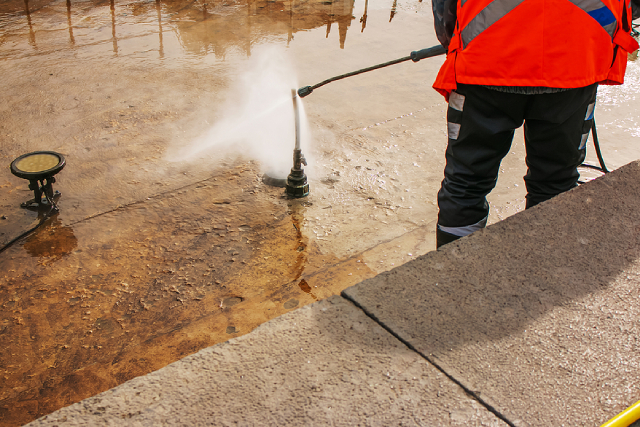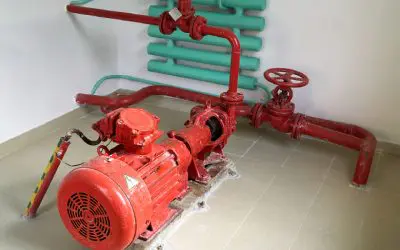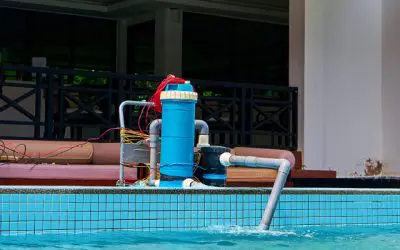
Pressure washers are powerful tools that make light work of tough cleaning tasks, be it built-up grime from your driveway, mud streaks on your car, or dust on your home’s exterior. However, to truly maximise the performance of your pressure washer, one shouldn’t focus solely on power or water flow, but also on using the right nozzle attachment for the task at hand.
The nozzle determines how water exits your washer, shaping its pressure, speed, and coverage area. By simply switching attachments, you can transform your unit from a delicate rinsing tool into a grime-busting machine. This versatility is what makes a high-pressure cleaner so valuable for homeowners and professionals alike.
Below, we’ll explore everything you need to know about pressure washer nozzles, from understanding their spray angles to selecting the best type for your specific cleaning needs.
Understanding Pressure Washer Nozzles
Most pressure washers come equipped with a set of standard nozzles, each designed to deliver a different spray pattern. These nozzles typically attach to the end of the spray wand and control how the water exits the machine. The main types are categorised by angle—commonly 0°, 15°, 25°, and 40°—with each angle determining how wide the spray pattern will be.
- Narrower angles (e.g., 0° and 15°) produce a concentrated, high-pressure jet of water ideal for cutting through stubborn grime and debris.
- Wider angles (e.g., 25° and 40°) provide gentler sprays that cover a larger surface area, perfect for rinsing and general cleaning.
When choosing or replacing nozzles, it’s essential to check the PSI rating. Each nozzle is rated to handle a specific pressure range, and using one rated too low for your washer can lead to damage or even dangerous projectiles. A good rule of thumb is that it’s fine to use a nozzle with a higher pressure rating than your washer’s, but never the reverse.
For instance, if you use a 25° nozzle on a 2,000 PSI pressure washer, you’ll need to position it closer to the surface to achieve effective cleaning. On a 3,500 PSI unit, however, the same nozzle can clean more quickly and from a greater distance, covering a wider area with less effort.
How to Choose the Right Pressure Washer Nozzle
Selecting the right nozzle is all about balancing cleaning efficiency with surface safety. A simple yet effective strategy is to start with the widest spray angle and gradually move to narrower ones only if necessary. This approach helps avoid surface damage while ensuring you still achieve the desired cleaning results.
If you’re cleaning a new or delicate surface, begin with a 40° nozzle at a distance of about one metre. Gradually move closer until you see results. If the dirt remains, switch to the next smaller nozzle (e.g., 25° or 15°) and repeat. Always test on a small, inconspicuous area first to confirm that the pressure level is safe.
Pay attention to the relationship between your pressure washer’s PSI and GPM (gallons per minute) ratings as well. The right nozzle ensures these values work harmoniously, preventing unnecessary strain on your washer’s high-efficiency pump, which plays a key role in maintaining consistent water output and prolonging equipment life.
What Are the Different Power Washer Nozzles Used For?
Each nozzle has a distinct function, and using the correct one can prevent damage to surfaces while improving cleaning efficiency. Below are the most common types and how to use them effectively.
1. 40° Nozzle – For Gentle, Wide Cleaning
The 40° nozzle provides the widest spray pattern, making it ideal for rinsing vehicles, windows, or delicate surfaces. It delivers lower pressure, ensuring you can wash without the risk of scratching paintwork or damaging fragile materials.
2. 25° Nozzle – The All-Rounder
The 25° nozzle is one of the most versatile tips available. It’s great for cleaning siding, decks, driveways, and pavements, as well as rinsing mud or dirt off vehicles and outdoor furniture. If you’re ever uncertain about which nozzle to start with, this one is your safest bet.
3. 15° Nozzle – For Deep Cleaning
The 15° nozzle is designed for tackling tough stains such as mould, mildew, or ground-in dirt. It’s particularly effective on concrete, brick, or metal. On lower-powered washers (below 2,000 PSI), it’s ideal for cleaning patios or paths. With higher-powered models, it’s strong enough to remove paint or graffiti.
However, exercise caution: its concentrated spray can easily damage wood, paint, or softer materials if you linger too long in one spot.
4. 0° Nozzle – For Maximum Power
The 0° nozzle produces a narrow, high-pressure jet that can cut through heavy grime or reach tight areas. It’s excellent for removing caked-on mud, rust, or tar from metal surfaces.
That said, this nozzle is extremely powerful and should be handled carefully since it can carve into wood, strip paint, or even etch concrete if used too close. Always follow safety tips to prevent injuries, such as wearing proper footwear and other protective gear when using it.
5. Turbo Nozzle – Power and Coverage Combined
The turbo (or rotary) nozzle combines the intensity of a 0° stream with a rotating motion that widens the spray pattern. The result is a cone-shaped jet that cleans more efficiently, making it perfect for large areas like driveways or stone walls.
This attachment can significantly boost cleaning power, especially when paired with electric washers, allowing them to perform closer to the level of gas-powered models.
6. Soap Nozzle – For Detergent Application
The soap nozzle is used for applying detergent or cleaning solutions. It works by drawing detergent from a built-in tank or external container and mixing it with water at a low-pressure setting, usually around a 20:1 ratio.
Because of its gentle flow, this nozzle is ideal for pre-soaking cars, outdoor furniture, or siding before rinsing. Just keep an eye on your detergent levels—it can empty faster than you might expect!
7. Multi-Tip Nozzle – For Convenience
A multi-tip nozzle combines multiple spray patterns into one adjustable head. By twisting the dial, you can switch between spray angles without swapping attachments. While convenient, these nozzles are usually limited to around 3,300 PSI and can feel slightly heavier during extended use.
Expert Tips for Getting the Best Results
Here are a few best practices to help you get the most out of your pressure washer:
1. Use appropriate safety gear. Always wear closed-toe shoes and safety goggles. Even at wider spray angles, water pressure can easily cause injury.
2. Maintain optimal distance. Start at least one metre away from the surface and move closer gradually. This prevents damage and ensures even cleaning.
3. Clean in consistent patterns. Move the nozzle in overlapping sweeps, much like mowing the lawn, to avoid streaks and uneven cleaning.
4. Don’t rely solely on high pressure. Let detergents or pre-treatments loosen dirt first to save time and reduce wear on both the washer and surfaces.
5. Keep your nozzles clean. Blockages can reduce performance or create uneven spray patterns. A small piece of debris can make a noticeable difference.
6. Match nozzle types to your washer. If your unit’s manual lists specific nozzle sizes or limits, always follow them to avoid excessive strain or water wastage.
Conclusion
A pressure washer is one of the most versatile cleaning tools you can own, but only when paired with the right nozzle attachment. Each nozzle serves a unique purpose, from gentle rinsing to high-impact cleaning, allowing you to tackle different surfaces with confidence.
So, take the time to understand how each type works and follow proper cleaning techniques. In doing so, you’ll achieve better results and make every cleaning task quicker, safer, and more satisfying.



